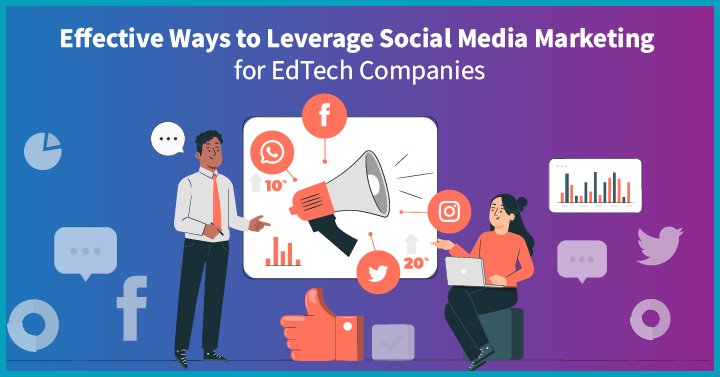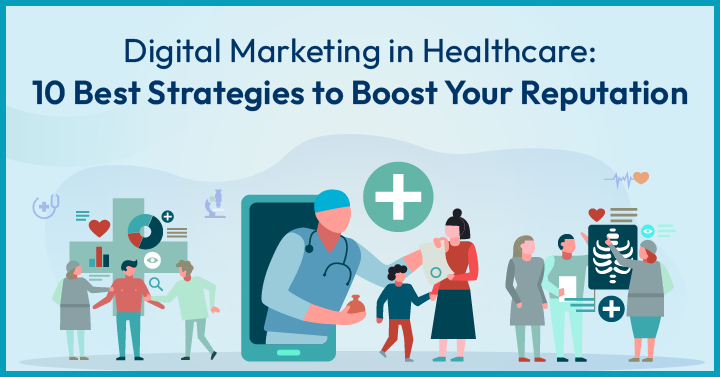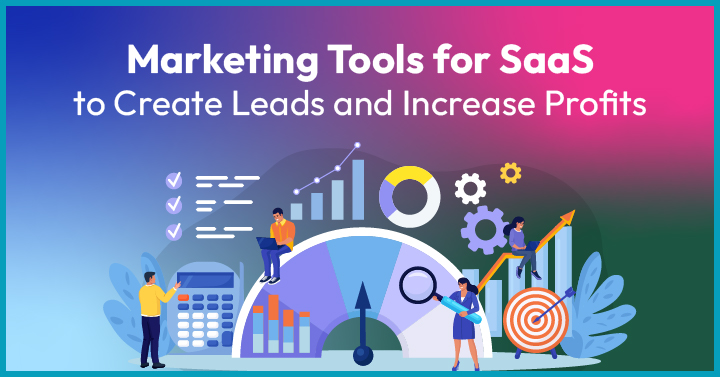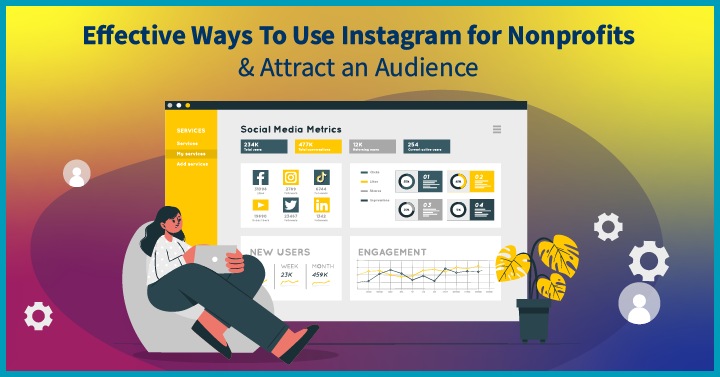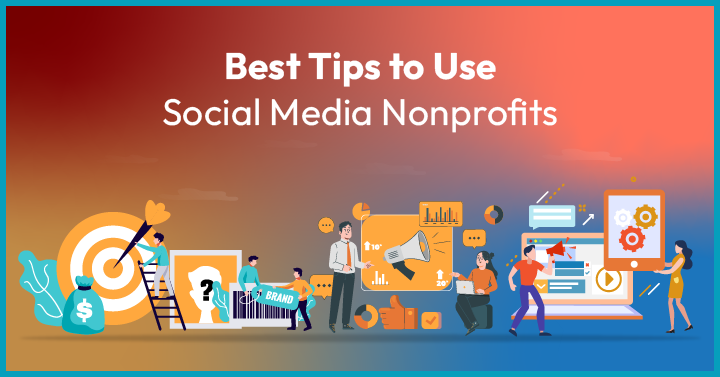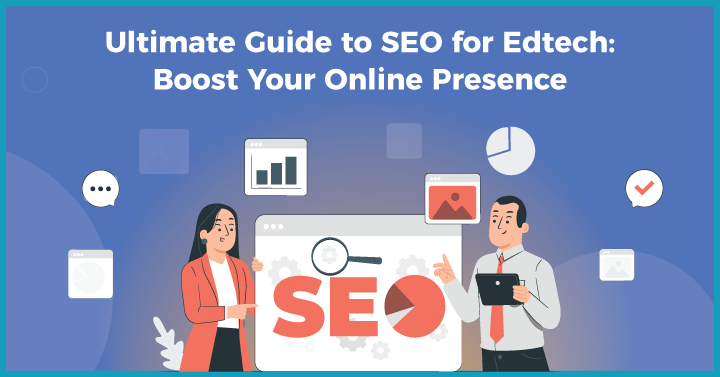According to statistics reported by Profile Tree,
- 90% of college students around the world have reported using social media as an academic resource.
- 70% of K-12 teachers use social media for academic purposes.
These numbers underscore the increasing influence of social media in the education sector, emphasising the importance for edtech businesses to embrace this powerful marketing channel to effectively reach their target audience.
Moreover, the integration of education and social media offers a unique opportunity for edtech companies to not only promote their products and services but also actively engage with students and educators.
By harnessing the power of social media marketing, edtech businesses can foster meaningful connections, share valuable resources, and cultivate a vibrant online community that enhances the learning experience for all stakeholders involved.
In this article, we will explore the importance of social media marketing for edtech businesses and discuss strategies that can drive success in this rapidly evolving landscape.
2. Why is Social Media Marketing Important for Edtech Businesses?
Social media marketing offers a myriad of benefits for Edtech businesses. Here, we have listed a few of them:
- Social media is a platform that helps reach a vast audience of students, teachers, parents, and education professionals. By effectively leveraging social media, edtech companies can engage with their target audience, build brand awareness, and establish themselves as thought leaders in the industry.
- Platforms like Facebook, Instagram, Twitter, YouTube, and LinkedIn have billions of active users, making them perfect channels to showcase your edtech products and services.
- Social media allows for targeted advertising. With advanced audience targeting options, you can tailor your marketing campaigns to reach specific demographics, interests, and educational levels. This ensures that your message reaches the right people, increasing the chances of converting them into loyal customers.
- Social media platforms enable two-way communication, allowing you to engage with your audience, address their queries, and build strong relationships. By actively participating in discussions, sharing valuable content, and responding promptly, you can gain the trust of your target audience.
- Social media platforms offer unique opportunities for interactive and personalised marketing. Edtech businesses can create engaging content, such as videos, infographics, and quizzes, to educate and entertain their audience.
- The real-time feedback loop and data analytics on social media platforms empower edtech companies to adapt swiftly, ensuring their products and services resonate with the dynamic needs of the modern learner.
3. 8 Actionable Ways Edtech Companies Can Leverage Social Media Marketing
3.1 Choose a Platform
To develop an effective social media strategy, it is crucial to spend time on the right platform and target the appropriate audience. To achieve this, it is important to gather pertinent information by answering the following questions:
- Who is your target audience?
Identify the demographics, interests, and needs of your ideal customers. This will help you tailor your messaging and content to resonate with them effectively.
- Which social media platforms are your target audience using?
Research and identify the social media platforms that your target audience frequents the most. This will allow you to allocate your resources and efforts to the platforms where you are most likely to reach and engage with your audience.
- What are your goals and objectives?
Define clear and specific goals for your social media marketing efforts. Are you looking to increase brand awareness, generate leads, drive website traffic, or establish thought leadership? Setting SMART (Specific, Measurable, Achievable, Relevant, Time-bound) goals will help you measure the success of your campaigns.
- What type of content resonates with your audience?
Understand what type of content your target audience finds valuable and engaging. This could include educational resources, industry insights, case studies, success stories, or interactive quizzes. Tailor your content strategy accordingly to provide maximum value to your audience.
- How can you differentiate yourself from your competitors?
Analyse your competitors’ social media presence and identify gaps or opportunities where you can stand out. Determine what unique value proposition you can offer and how you can position yourself as a leader in the Edtech industry.
By answering these questions, edtech firms can develop a more professional and targeted social media strategy that effectively reaches their desired audience and drives meaningful engagement.
3.2 Optimise Social Media Profiles
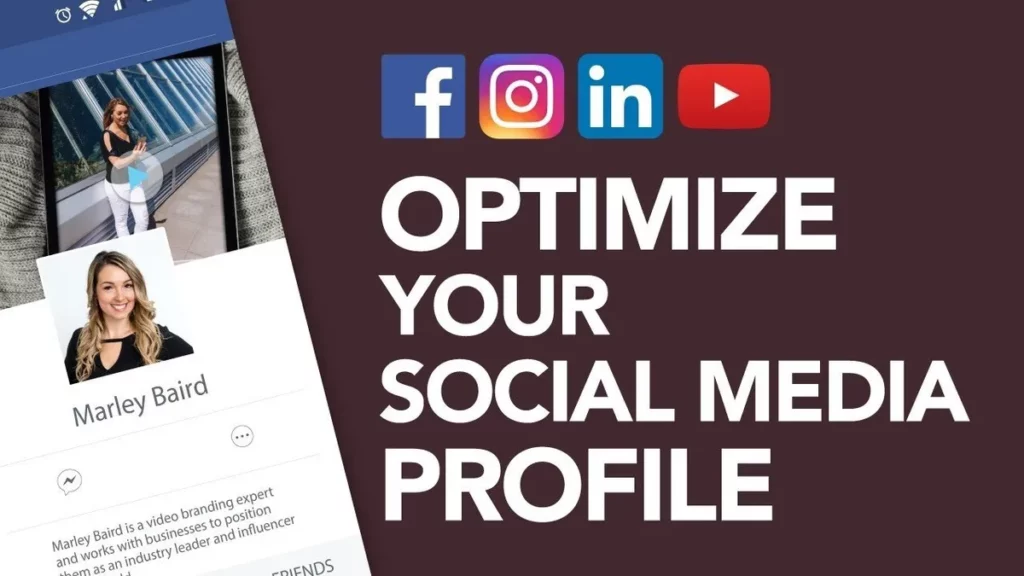
Are you wondering why your social media page is not getting the desired traction? In most cases, a poorly designed social media page can increase your bounce rate. Many edtech firms already have a solid social media presence; staying ahead is not easy.
According to HubSpot, 21% of consumers will unfollow the page if they see repetitive content or posts. Other reasons could include too few postings, too much posting, clutter, and disorganised posts.
Typically, social media optimisation depends on competitor research, performance analysis, and insights from social listening. Here are a few factors that help you to create a winning profile:-
- The profile picture should have the company logo to build brand identity
- Usernames must be consistent across all social platforms
- Include a CTA in the bio that redirects to your edtech website
- Make sure to update the cover page regularly with trending content
Here are examples of reputed edtech brands with a well-crafted business page –
- Udemy – Learn and teach anything online
- Coursera – Learn without limits
- Skillshare – Online learning community
It will help if you use the right combination of text and images (50:50) to make the page look appealing.
3.3 Use a Social Media Content Calendar
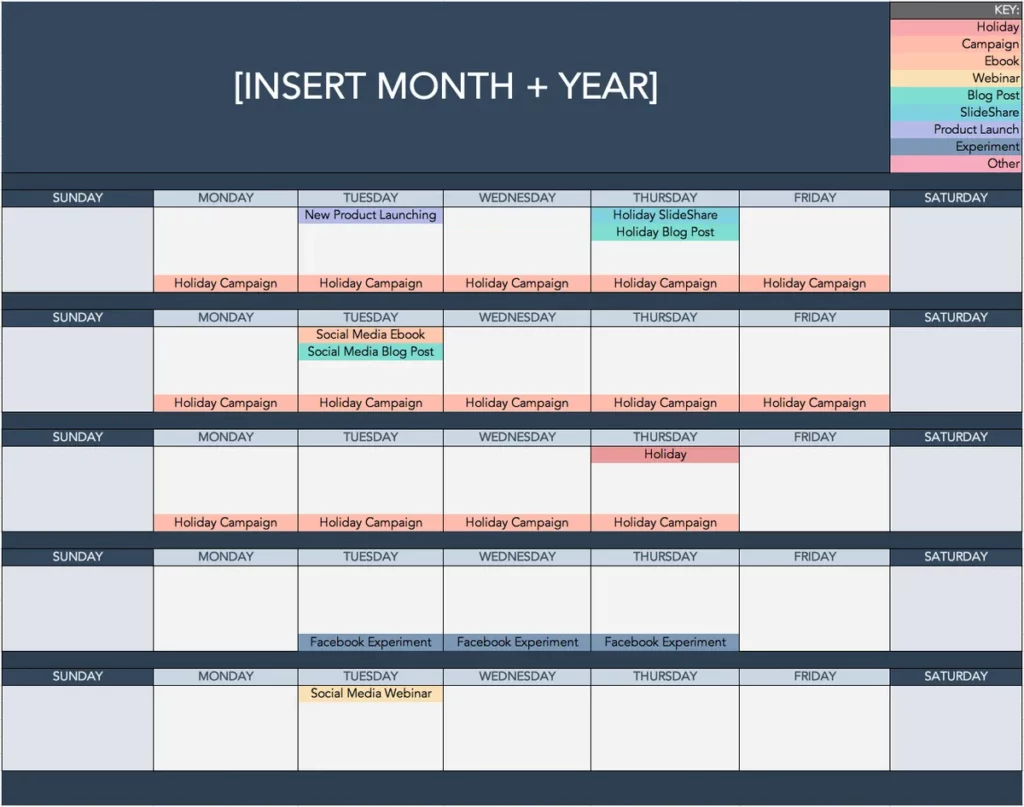
Did you know Internet users are likely to spend one-third of their time on social media? But, you can’t expect much from social media if you post random content and @mention a few people. You don’t reach the level of EdSurge on Twitter with just a few random posts. Likewise, there’s a reason why Unacademy’s posts on Instagram get thousands of likes.
Although some of the reputed edtech brands might have heavy budgets, the principles they use to create an excellent social media presence – can be replicated by others. The common thread between the biggest edtech brands on social media is – CONSISTENCY.
Post content on social media consistently to keep the followers engaged and gain new followers. For instance, you can post 2 to 3 times on Instagram, 1 to 4 times on Facebook, 1-2 times on Twitter, and once on LinkedIn.
Create a posting schedule (content calendar), like when and where the posts have to be shared. Long breaks between postings can make your audience bored, and you may lose followers quickly.
Here are some downloadable content or editorial calendar templates that help you prepare a schedule –
- HubSpot’s Social Media Content Calendar for Startups
- Free Social media Calendar Template – Asana
- Content Calendar Template – Monday
3.4 Best Times to Post
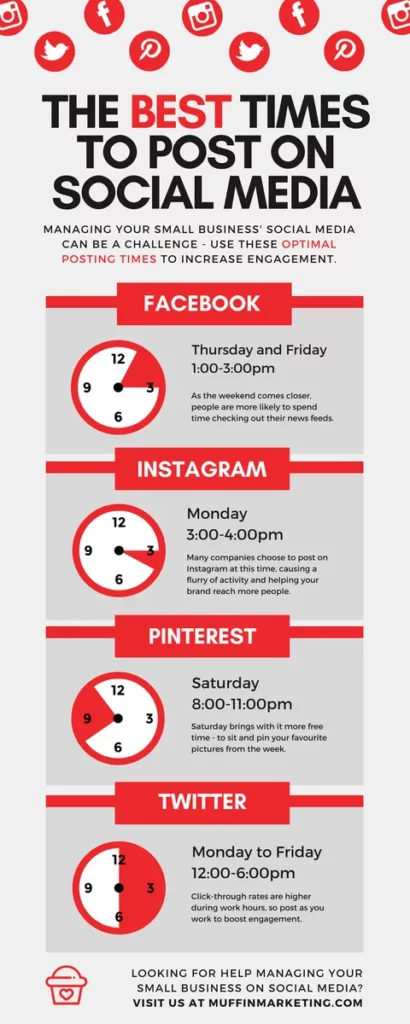
Each social media platform has its own benefits, depending on the content type, audience, and benefits. If you’re not getting the desired engagement, consider revisiting your KPIs and goals that help you know what time and days you get more engagement.
The highest times of engagement for edtech posts (based on our social media analysis) on different platforms are as below –
- Best days and times to post on Facebook – Tuesdays, Wednesdays, and Thursdays – 10 am to 2 pm
- Worst days to post on Facebook – Saturday
- Best days and times to post on Instagram – Tuesdays and Wednesdays – 10 am to 1 pm
- Worst days to post on Instagram – Sunday
- Best days and times to post on LinkedIn – Tuesdays, Wednesdays, and Thursdays – 10 am to noon
- Worst days to post on LinkedIn – Saturday and Sunday
With the right data, edtech brands can effectively plan content to post on different platforms. In most cases, a detailed analysis of the target audience might reveal the best times to post.
Social media management tools like Sprout Social, Buffer, and Hootsuite can help you dig deep into the analytics and develop a customised strategy for your brand.
3.5 Use Audience Targeting
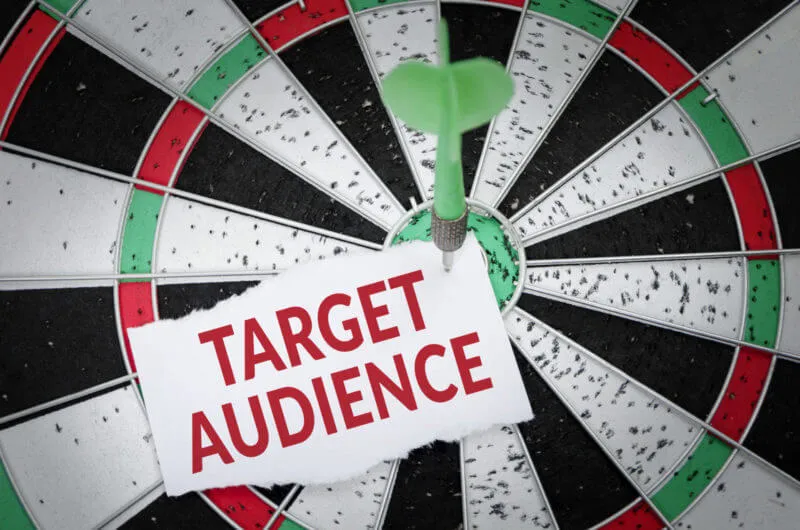
You have created stellar content and crafted the best learning experience for your target audience. The challenge is – how to connect with them?
Social networks are an essential part of communication for edtech brands. They are the key to keeping their audience informed about the latest updates and happenings.
Audience targeting on social media helps you segment your target audience into groups based on different criteria, including demographics, interests, intent, and characteristics. Once the audience is grouped, edtech brands can use paid advertisements to target a specific audience.
Let’s take a look at the below table to know how to segment the target audience –
| Age | Category | Interests |
| 5-16 | Children | Games, sports, puzzles, dance, languages |
| 16-25 | Students | Sports, personality development, travel, music, entertainment |
| 22-60 | Parents | Sports, colleges, universities, cooking, health, fitness |
| 25-60 | Teachers | Self-development, teaching, lessons, curriculum, schools, and colleges |
Based on the category, age, and interest – create a social media marketing plan that engages them and conveniences them to interact with your brand.
3.6 Don’t Overlook Hashtag Marketing
Many edtech firms are using Facebook and Instagram to reach the right audience for new customer acquisitions and app installs. In social media marketing, #hashtags are an easy way to stay current and incorporate relevant content into online conversations.
#Hashtags will offer you an easy and convenient approach to joining a vital conversation or staying in the loop. If you are an edtech marketer, it is crucial to find and use relevant hashtags to join discussions on Facebook, Instagram, Twitter, LinkedIn, etc.
For instance, Vedantu, one of the leading online tutoring platforms, started #vedantulearningchallenge during the lockdown, calling up their target audience to send videos of skills they learned at home.
To get involved in hashtag marketing, identify the right keywords based on your products or services. Explore hashtags around such themes and select the one appropriate for your brand. Some of the popular hashtags in edtech are – #edchat, #learning, #teaching, #STEM, #elearning, #EdApps, #Schools, etc.
3.7 Repurpose the Best Content
Your website might have fantastic blogs, white papers, case studies, and eBooks, but how can you spread the word and urge people to read your content? Although the material you post on your website can lead to a high ranking on SERPs, it can be amplified when combined with social media techniques.
Passive social media marketing for edtech can redirect tons of traffic from your social media page by repurposing the existing content. Conversely, you can provide the repurposed content with a social media boost for additional reach. It can be through unpaid or paid media efforts, liking, commenting, enlisting influencers, etc.
For instance, you might convert your latest blog post on the best e-learning trends into a YouTube video, split it into an interesting Twitter thread, or even create a carousel to post on Facebook. Likewise, if you have recently surveyed the best courses in cloud computing, pull the results into an infographic.
3.8 Bring Influencers on Board

The growth of the edtech industry is reflected on social media, with brands sharing their accomplishments and success stories. In addition, many edtech brands use influencer marketing to boost their brand and generate more leads. Check out the edtech influencers using social media to engage and entertain those in the education industry.
With people spending a precedent time on social media, many people follow their favourite celebrities to stay updated with their current activities. In addition, edtech influencers on social media are helping parents, teachers, and students by providing valuable tips and guidance.
There are millions of influencers on social media. Analyse an edtech influencer with a strong base who can help you run a top-notch campaign.
Check out how the top 10 edtech companies are growing their audience base with influencer marketing.
Social media marketing is a powerful tool for edtech businesses to reach and engage with their target audience. By implementing the strategies mentioned above, you can unlock the true potential of social media and drive success for your edtech brand.
4. What Are the Best Social Media Marketing Software for Edtech?
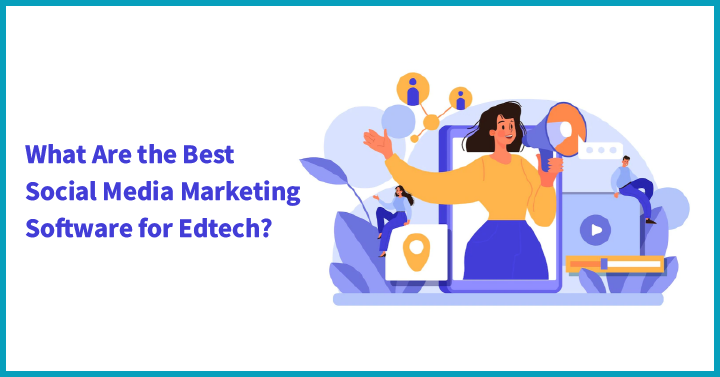
4.1 VoiceThread

It is one of the best platforms to share documents, images, and videos. It was launched by Alexandra Pickett (an instructor at SUNY Albany) in 2006 to introduce herself to students through an informal video. With easy-to-use and intuitive features, it helps students to make the content more engaging and appealing.
4.2 Ted-Ed
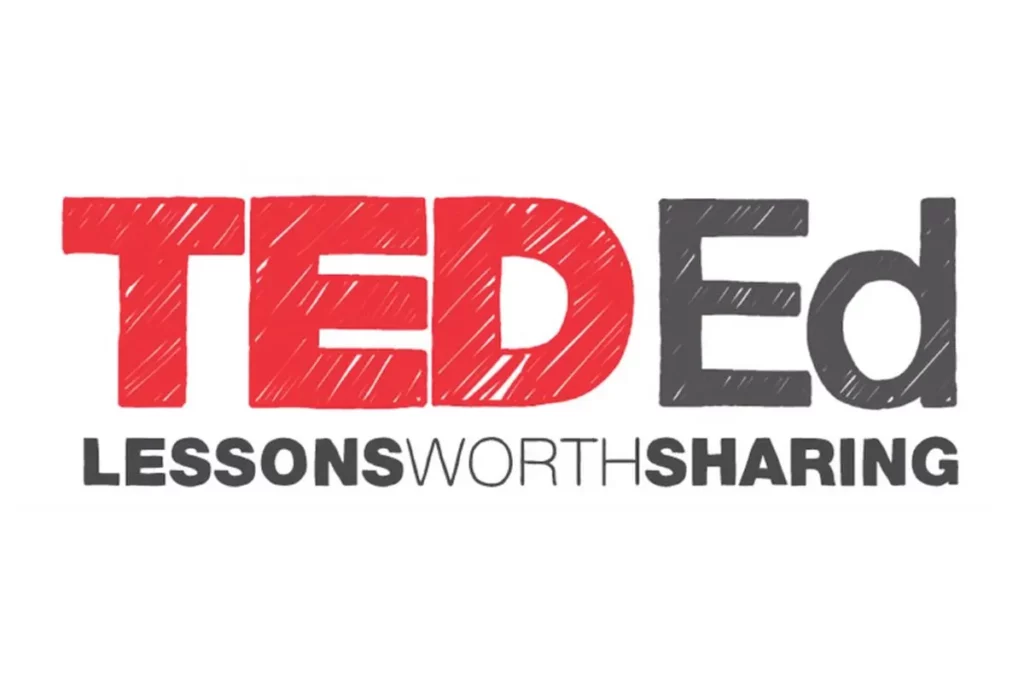
While the original Ted Talks are not aimed at school audiences, this platform allows users to create interactive lessons around YouTube videos by adding discussions, open-ended questions, additional resources, and more. The platform has hundreds of educators who present their ideas and share lessons in TED-styled talks. In addition, one can find a massive collection of videos in various categories such as – science, technology, business, economics, etc.
4.3 Wikispaces Classroom
This engaging social media platform for edtech has been adopted by more than 10 million teachers globally. You can invite students and parents to get started and share announcements, study material, and other information. Like other platforms, it allows users to edit pages and produce informative content rather than just consume it. Besides, teachers can create groups and assign projects to students so they can learn to collaborate with others.
Besides the above, Edmodo, The Connected Educator, TeacherTube, and Academia.edu are some edtech platforms worth trying.
5. Case Study Examples of Social Media Marketing for Edtech
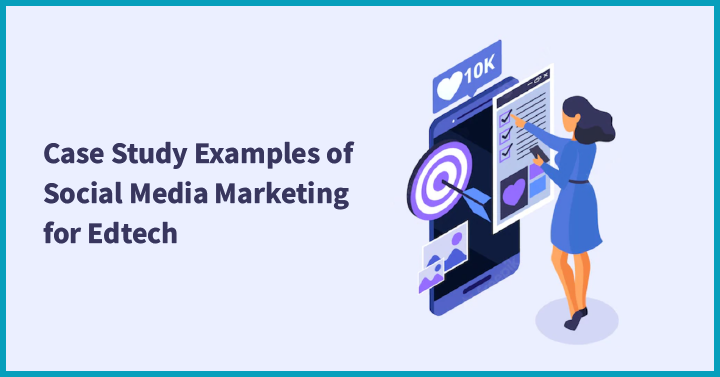
5.1 Blackboard
It is a learning management solution for Higher Ed, K-12, business, and government that has earned the status of a legacy brand in the category of young products. Across the social media handles, they offer remote learning toolkits, tips for teachers and students, webinars, and more.
5.2 Duolingo
It is another in the list of “best edtech” firms engaging the target audience on social media in a playful manner. The promotional pieces with colourful visuals on social media have gained the attention of many.
6. How to Analyze Social Media Marketing Results?
According to social media statistics, 53% of consumers know about new companies on social media. Social media marketing for edtech has many benefits, such as filling the top of the funnel with leads, wider brand reach, better customer service, online reputation, and so on.
However, the question is how to analyse social media marketing results? Are you able to drive the best ROI?
To know if your marketing strategy is working for you or not, you need to analyse the effort and measure the key metrics. They will help you understand if you are meeting or exceeding your goals to plan for the best course of action.
In this section, we have covered the KPIs to measure your social media marketing results. Keep reading more about social media KPIs that help measure marketing efforts.
- Reach – Awareness of the brand
Reach KPI helps you understand how many people saw your post on social media. There are three types of reach – total reach, total impressions, and share of voice(SOV). Remember that your audience can’t interact with you if they don’t know about your existence.
- Engagement – Interaction with the brand
This KPI tells how well the content resonates with your target audience and to what extent your brand influenced them. The more the user interacts with your posts or page, the more likely you will gain their trust. Examples of engagement are – likes, shares, comments, replies, etc.
- Conversion – Converting interactions into customers
The lead conversion rate, non-revenue conversions, and sales revenue are the KPIs to measure the rate at which the interactions turn into customers. It tracks the results of social media efforts and how the audience interacts with your brand. You can look at Google Analytics to see which clicks from social media to your website converted into sales.
- Customer loyalty – Positive or recurring interaction with the brand
Positive interaction with a brand shows increased referrals, recommendations, and purchases. A recent study by Sprout revealed that 77% of customers are likely to choose a brand over competitors after a positive interaction. KPIs that measure customer loyalty include cost per lead, resolved issues, customer lifetime value, etc.
Tracking social media KPIs is an essential element of edtech social media strategy. Without this, you won’t know if you are achieving your business goals. For instance, by knowing how many comments, likes, and shares your posts generate, you will be able to gauge the overall engagement.
Now that you have learned about the strategies to unlock the power of social media marketing for EdTech, it’s time to put them into action. Let’s see how a digital marketing agency can help you with it.
7. How Can a Digital Marketing Agency Help?
A digital marketing agency has extensive knowledge and experience in utilising various social media platforms effectively. They can identify the most suitable platforms for the EdTech company’s target audience and develop a comprehensive strategy for each platform. The agency can create engaging and informative content that resonates with the target audience. This includes designing visually appealing posts, writing compelling captions, and sharing valuable resources such as articles, videos, and infographics.
Growth Ganik is a full-stack digital marketing agency with a team of experts and vast resources that are dedicated to crafting and implementing professional and targeted social media strategies. Our focus is on building a vibrant online community for our EdTech clients, where students, educators, and other stakeholders actively engage through comments, likes, and shares, fostering meaningful connections and facilitating discussions. Our agency also focuses on tracking the performance of social media campaigns, measuring key metrics, and providing detailed reports. This helps suggest solutions that are data-driven decisions.
Reach out to us today for a FREE 45-minute consultation.
8. FAQS
- How Do I Market for Edtech?
Some of the best ways to market for edtech are – SEO, video marketing, content marketing, paid media, and email marketing.
- How Can I Increase My Edtech Sales?
Leverage the power of edtech marketing to drive more traffic, generate leads, and drive conversions.
- Who Are the Customers of Edtech Companies?
The main customers of edtech companies include – teachers, parents, students, and business owners.
- What social media platforms should EdTech companies use for social media marketing?
It depends on your target audience. If your target audience is primarily students, you may want to focus on platforms such as Instagram and Snapchat. If your target audience is educators or administrators, you may want to focus on platforms such as LinkedIn and Twitter.
- How often should EdTech companies post on social media?
It depends on your audience and the platform you are using. Generally, you should aim to post at least once a day on platforms such as Facebook and Instagram.
- How can EdTech companies measure the success of their social media marketing efforts?
You can measure the success of your social media marketing efforts using social media analytics. This can include metrics such as engagement, reach, and conversions.

